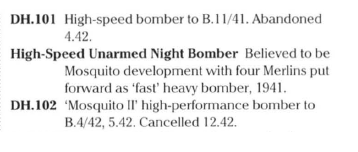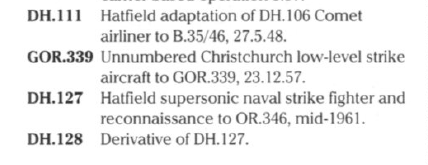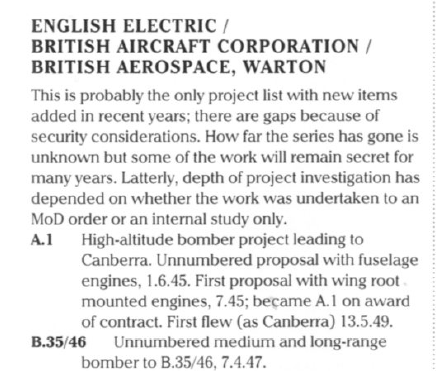Again, I must be a party pooper.
General Aircraft merged with Blackburn in January 1949, about 2-3 months after T.16/48 had been sent out to industry. In fact, if we "work our brains" as Hesham asks us too the blooper in Sturtivant's/Meekcom et al's list is glaringly obvious "...Avro,
Blackburn & General B.80, Boulton Paul,
General Aircraft..." - General appears twice and obviously cannot be two companies at once. I cannot imagine GAL would bother to submit a design in January 1949 just at the time it is being taken over.
Just for clarification on dates, the Tender Design Conference wax held on 14th April, 1949 - so Miles and General were both defunct as independent organisations before that date.
So of the 'missing' unknowns:
- De Havilland: no missing DH. designation gaps for this period of time. There is the possibility of Christchurch being a potential origin but Schneiderman is our resident Airspeed/Christchurch expert and if he says there is no trace I am inclined to believe him.
- English Electric: no missing P. designation gaps. The idea that EECo bogged down with Canberra variants and early P.1A development work suddenly started messing about with a small trainer seems a bit odd. Petter had bigger fish to try and EECo had plenty of lucrative manufacturing work already in hand.
- Heston: bit of mystery company, we have gaps in SBAC designations and very patchy coverage. They stopped design work sometime around 1948-50. I am sure they did not tender, whether they thought they might offer something is open to question. No evidence in the MoS files.
- Miles: I have already proven this is impossible on the dates alone
- General Aircraft: impossible on the dates alone as by the time of tender submissions was already being subsumed into Blackburn
- Slingsby: there is missing knowledge of some T. designations, T.33 for example would fit this timescale. I am sure they did not tender, whether they thought they might offer something is open to question. No evidence in the MoS files.
There are no projects of this type described in the main aviation magazines, no models shown at trade shows, no brochures, not even advertising artwork.
This is true, but I would place one caveat - the Airtech, Chrislea, Elliotts, Portsmouth Aviation and Satellite tenders are equally as enigmatic. The MoS files give detailed technical information but not a visual trace of the actual designs seem to exist. Indeed histories of Chrislea, Portsmouth and Satellite never make any reference to the designs for T.16/48. For example, even a quite recent article (I think in
Aeroplane) makes it sound like Major Dundas Heenan only ever designed the Satellite and the Firth Helicopter, but we now know he designed an entry to T.16/48 which was clearly not based on rehashing the Satellite's basic design. Likewise Portsmouth is only credited with the Aerocar.
It would be easy to dismiss them as chimeras too but for the fact the MoS evidently read through a stack of technical documents on them and indeed Chrislea even asked the MoS to advise them on the export potential of their design!
So yes, caveats from me but I am 100% sure all the submitted tenders are known and those few generic "Basic Trainer T.16/48" entries are either incorrect or guesswork.




